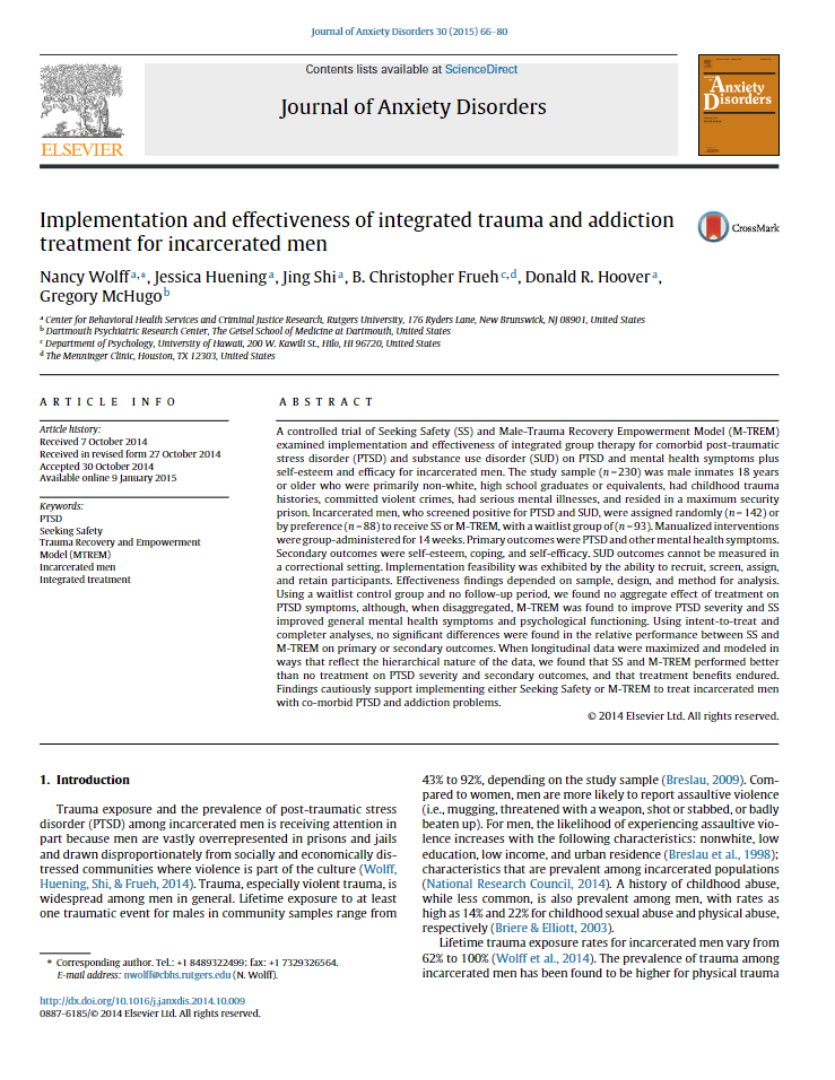A controlled trial of Seeking Safety (SS) and Male-Trauma Recovery Empowerment Model (M-TREM) examined implementation and effectiveness of integrated group therapy for comorbid post-traumatic stress disorder (PTSD) and substance use disorder (SUD) on PTSD and mental health symptoms plus self-esteem and efficacy for incarcerated men. The study sample (n = 230) was male inmates 18 years or older who were primarily non-white, high school graduates or equivalents, had childhood trauma histories, committed violent crimes, had serious mental illnesses, and resided in a maximum security prison. Incarcerated men, who screened positive for PTSD and SUD, were assigned randomly (n = 142) or by preference (n = 88) to receive SS or M-TREM, with a waitlist group of (n = 93). Manualized interventions were group-administered for 14 weeks. Primary outcomes were PTSD and other mental health symptoms. Secondary outcomes were self-esteem, coping, and self-efficacy. SUD outcomes cannot be measured in a correctional setting. Implementation feasibility was exhibited by the ability to recruit, screen, assign, and retain participants. Effectiveness findings depended on sample, design, and method for analysis. Using a waitlist control group and no follow-up period, we found no aggregate effect of treatment on PTSD symptoms, although, when disaggregated, M-TREM was found to improve PTSD severity and SS improved general mental health symptoms and psychological functioning. Using intent-to-treat and completer analyses, no significant differences were found in the relative performance between SS and M-TREM on primary or secondary outcomes. When longitudinal data were maximized and modeled in ways that reflect the hierarchical nature of the data, we found that SS and M-TREM performed better than no treatment on PTSD severity and secondary outcomes, and that treatment benefits endured. Findings cautiously support implementing either Seeking Safety or M-TREM to treat incarcerated men with co-morbid PTSD and addiction problems.
Implementation and effectiveness of integrated trauma and addiction treatment for incarcerated men
Citation:
Wolff, N., Huening, J., Shi, J., & Frueh, B. C., Hoover, D.R., & McHugo, G. (2015). Implementation and effectiveness of integrated trauma and addiction treatment for incarcerated men, Journal of Anxiety Disorder, 30, 66-80.
